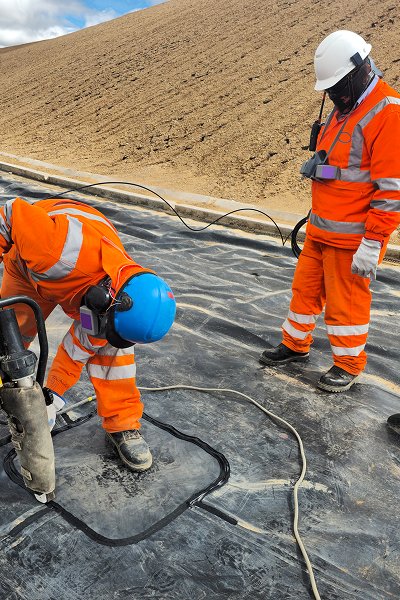Drainage boardis a three-dimensional synthetic material, usually made of high molecular polymer materials such as polyethylene (HDPE) and polypropylene (PP). Its structural design not only has good drainage function, but also can withstand certain pressure, isolate roots, and provide protection. It is widely used in the foundation, covering layer or waterproof layer of various structures.

Main classification of drainage board
Roll-type drainage board (sheet drainage board)
Usually in the form of rolls, light weight, easy to transport, suitable for large-area laying, widely used in projects such as roof greening and underground garage tops. Its concave and convex structure forms a cavity, which is conducive to water flow guidance and storage and drainage.
Sheet-type drainage board (hard board)
Mostly rectangular plates, thick and strong, suitable for areas with large structural loads or point drainage, such as basement walls, foundation plates, etc.
Three-dimensional drainage board (storage and drainage board)
Products that combine water storage and drainage functions are usually modular combinations with porous brackets inside to effectively form water storage space. They are often used in planted roofs or ecological greening projects.
Classification by material composition
HDPE drainage board (high-density polyethylene)
One of the most common materials in the market, with excellent acid and alkali resistance, flexibility and compressive strength, suitable for most environments.
Polypropylene (PP) drainage board
The strength is slightly higher than HDPE, but the cost is relatively high, suitable for projects with high temperature or chemical stability requirements.
Recycled plastic drainage board
Mostly used in projects with special requirements for environmental protection, such as ecological gardens, municipal greening, etc. The cost is lower, but the performance is slightly inferior.
Structural design features of drainage board
Concavoconvex structure
Function: Drainage channel is formed by concavoconvex cone, hemisphere or columnar protrusions;
Features: It can quickly guide the accumulated water to the set drainage outlet to prevent water pressure accumulation.
Porous/grid structure
Function: It allows part of the water to be stored for plant root absorption and has the function of "water storage";
Features: It is often used in combination with roof greening system and ecological wall system.
Composite structure (with geotextile)
Function: Cover the surface of the drainage board with geotextile to enhance the filtration function and prevent mud and impurities from entering the drainage channel;
Features: It forms an integrated system of "filtration-drainage-water storage" to extend the service life of the drainage system.
Underground garage roof and underground building protection system
Underground engineering structures are vulnerable to rainwater penetration and soil backfill water pressure. Drainage boards can effectively replace traditional gravel blind ditches to build lightweight drainage systems.
Main functions:
Drain water that penetrates from the surface or roof;
Reduce the pressure of structural backfill soil;
Protect waterproof membranes from being damaged.

Landfill leachate drainage system
In the bottom or top closure system of the landfill, the drainage board is used in conjunction with the geotextile to quickly drain the leachate and avoid the accumulation of pollutants.
Main functions:
Quickly drain the leachate to the centralized collection system;
Form a complete anti-pollution structure together with the anti-seepage layer;
Withstand high load landfill pressure.

Drainage board technology FAQ
Q: How long is the service life of the drainage board?
A: The design life of high-quality HDPE drainage boards can usually reach more than 50 years, and the actual life is affected by material quality, environmental conditions and construction quality. The service life of PVC drainage boards is generally 20-30 years.
Q: How to judge whether the compressive strength of the drainage board is sufficient?
A: It should be selected according to the maximum pressure expected at the project site. Generally, the basement floor uses ≥300kPa and the road base uses ≥500kPa. Check the product's compressive test report and conduct on-site sampling and testing when necessary.
Q: Will the drainage board age? How to judge after aging?
A: All plastic materials will age. Signs of aging include: color change, surface powdering, increased brittleness, and decreased physical properties. Regular inspections and performance tests can assess the degree of aging.
Q: Does the drainage board need to have a slope when laying?
A: Ideally, a slope of no less than 2% should be maintained to facilitate drainage. On planes where slopes cannot be made, effective connection between the drainage board and the drainage pipe system should be ensured.
Q: What is the most reliable way to deal with the seams of drainage boards?
A: Choose according to the product type: overlap (usually 10-15cm), special connectors, hot air welding or gluing. Multiple sealing measures are recommended for key parts.
Q: Can the soil be backfilled directly after the drainage board is constructed?
A: It is usually necessary to cover the drainage board with a layer of geotextile as a filter layer to prevent soil particles from blocking the drainage channel, and then backfill.


